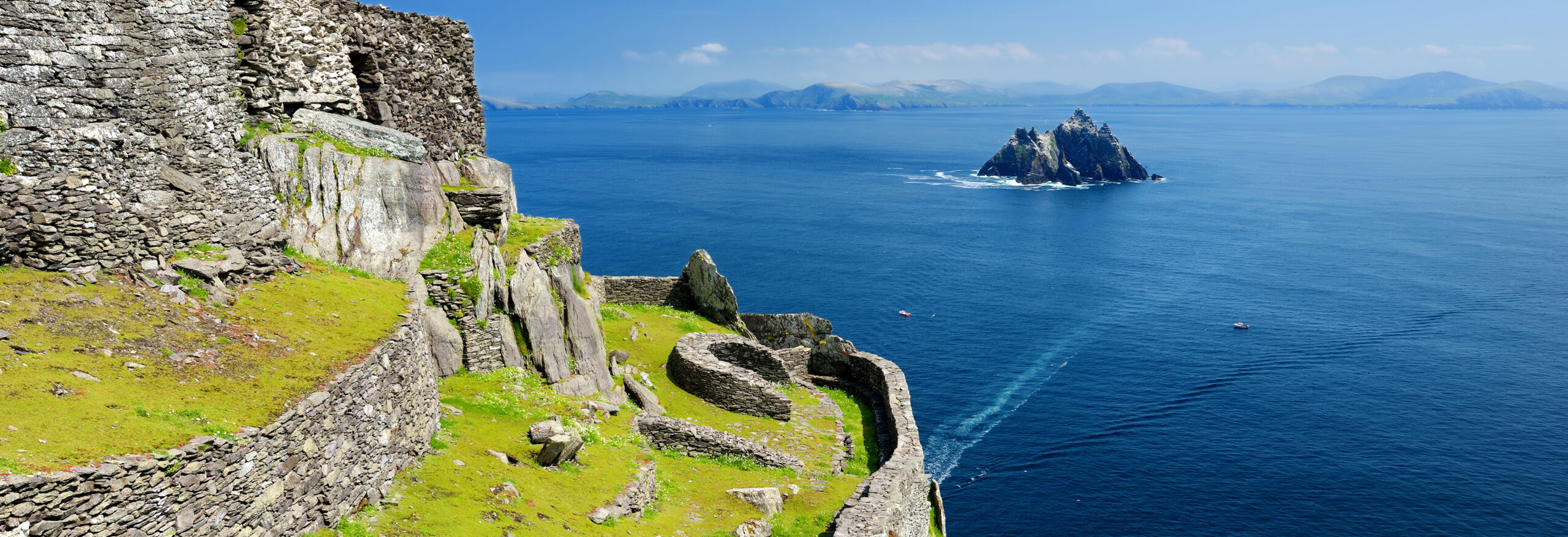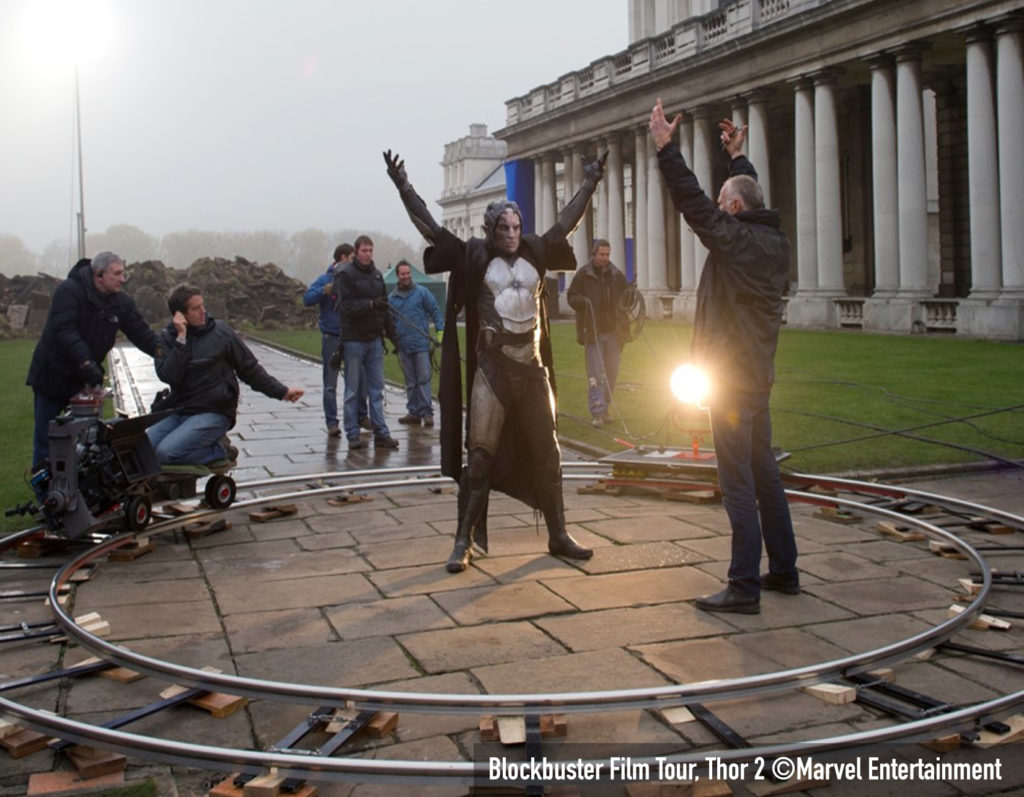Ireland isn’t just a land of rolling green hills and cosy pubs—it’s home to some of the world’s most fascinating heritage sites. From ancient tombs and rugged islands to surreal landscapes and literary legends, Ireland’s UNESCO-listed treasures are full of stories just waiting to be uncovered.
Brú na Bóinne
Just a short trip from Dublin, Brú na Bóinne (the Boyne Valley) is a portal to the past—and it’s got the credentials to prove it. Named a UNESCO World Heritage Site in 1993, it’s home to the famous passage tombs of Newgrange, Knowth, and Dowth.
Newgrange is the star of the show. Built around 3200 BC—older than the Egyptian pyramids—it’s a Neolithic marvel. The coolest part? Every winter solstice, the rising sun shines through a narrow passage to light up the inner chamber. Talk about ancient astronomy!
The entire valley is dotted with over 90 monuments—burial mounds, stone circles, and tombs, all decorated with stunning megalithic art. The people who built them didn’t have wheels or metal tools, yet they moved 200,000 tons of stone with incredible precision. Legend has it these tombs are doorways to the Otherworld. You can’t help but feel something magical in the air.
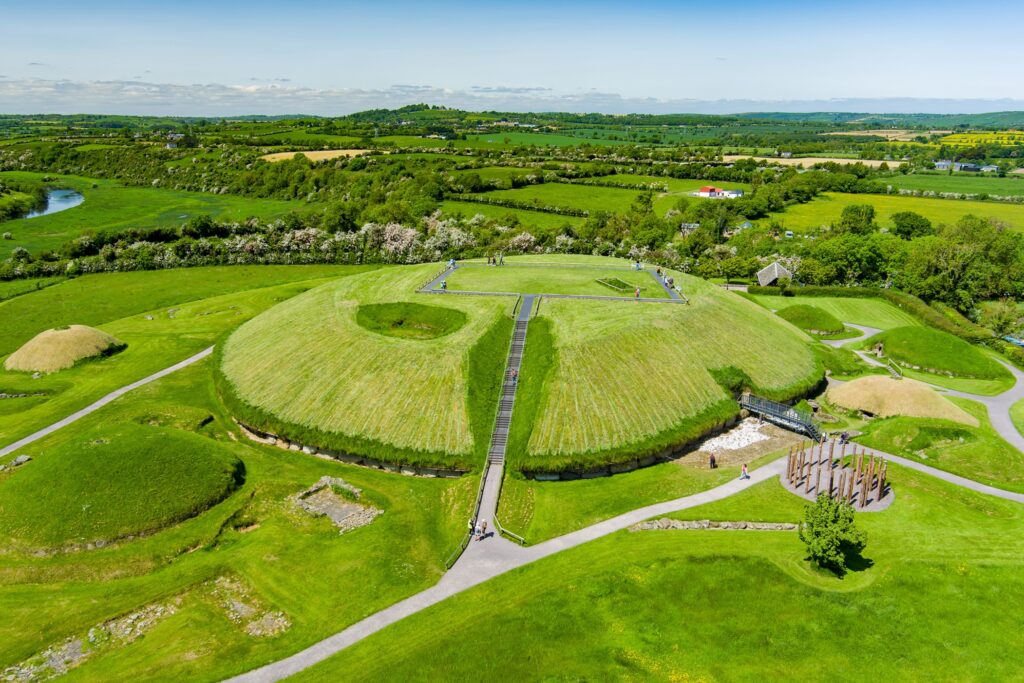
Skellig Michael
If you’ve seen Star Wars, you’ll recognise Skellig Michael—aka Luke Skywalker’s hideaway. But even without the movie fame, this jagged island off County Kerry is a bucket-list experience.
In the 6th century, a small group of monks settled here in search of peace and isolation. They built stone beehive huts 700 feet above the sea and lived simply, trading with passing ships and braving Viking raids. After 600 years, they moved to the mainland—but their legacy remains.
Now, Skellig Michael is a haven for wildlife. You’ll see puffins, gannets, arctic terns, and even basking sharks or dolphins in the surrounding waters. It’s remote, wild, and totally unforgettable.
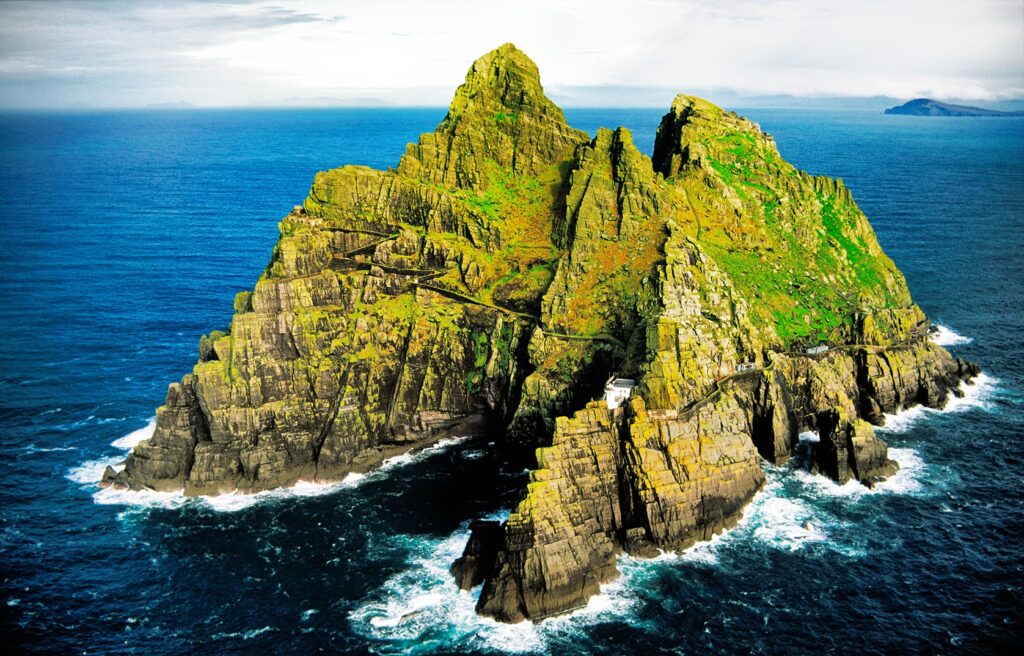
The Burren
Welcome to the Burren, Ireland’s otherworldly limestone wonderland in County Clare. The name comes from the Irish Boireann, meaning “rocky place”—and it fits. This vast, craggy landscape looks barren at first glance, but give it a second look.
From late spring through summer, the cracks between the stones burst into colour with wildflowers you wouldn’t expect to find growing side by side: Alpine blooms, Mediterranean herbs, and Arctic species. It’s a rare and delicate mix. Butterflies flutter through the air (28 species, to be exact), and cattle roam freely, as they’ve done for centuries.
Explorers will love discovering ancient tombs, caves, and mysterious sinkholes—there are 2,700 monuments scattered across the region! Head south and you’ll find the Burren gives way to the famous Cliffs of Moher, where stone meets sea in dramatic fashion.
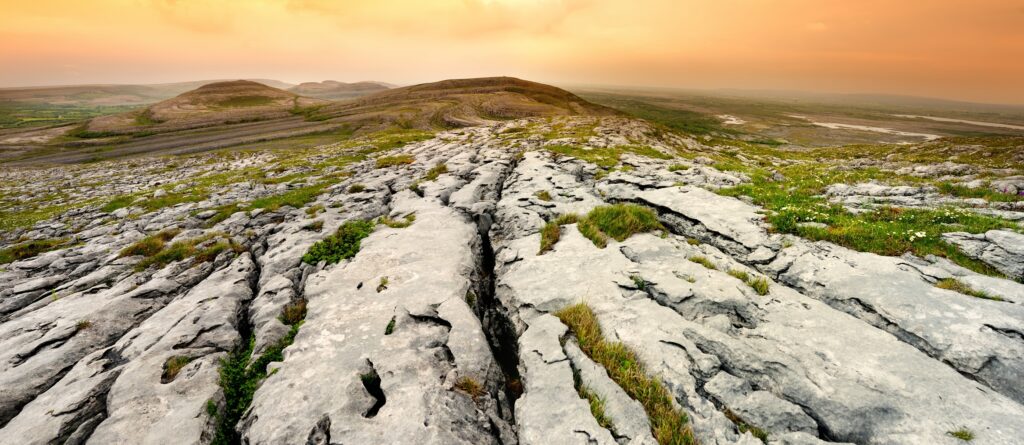
Dublin
It’s easy to get swept up in Dublin’s charm, from lively streets to cosy bookshops—but did you know the city is part of the UNESCO Global Network of Learning Cities?
By the 18th century, Dublin was the second largest city in the British Empire, right behind London. The Georgian era brought elegant buildings, grand boulevards, and forward-thinking urban planning—Europe’s first planning authority was born here in 1757!
Dublin also gave the world some literary heavyweights: Yeats, Shaw, and Beckett, all Nobel Prize winners, all shaped by this buzzing city. Today, Dublin continues to celebrate learning, creativity, and culture—whether through festivals, libraries, or a good old chat over coffee. It’s no wonder that Dublin is regarded as a capital of culture and learning.
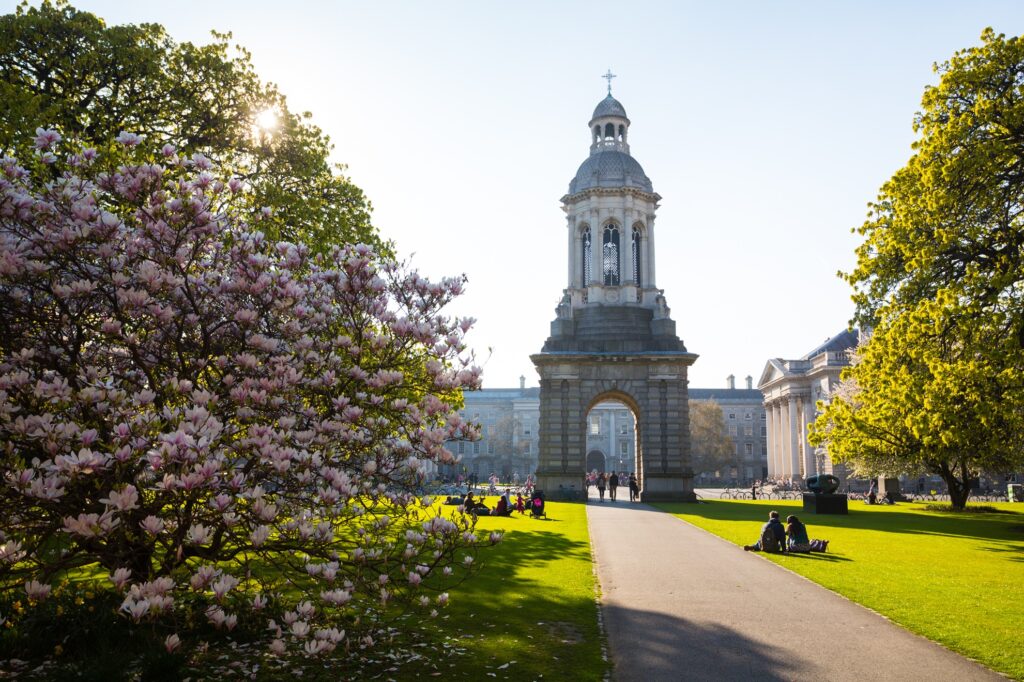
Giant’s Causeway
Up on the north coast of Northern Ireland, nature shows off at the Giant’s Causeway, and it’s nothing short of spectacular. 40,000 basalt columns, perfectly formed and stacked like stepping stones, tumble down into the sea from the Antrim plateau. It’s so striking, it looks more like the work of gods than geology.
Of course, Irish mythology has a take on that—this was the battleground of giants, who built a path to Scotland to fight over love or land (or both). Scientists, on the other hand, say these columns were formed 60 million years ago by volcanic activity.
Either way, it’s a place of wonder. The exposed cliff faces are a magnet for geologists, but for the rest of us, it’s simply one of the most dramatic landscapes in Ireland—made to be explored, photographed, and mythologised.
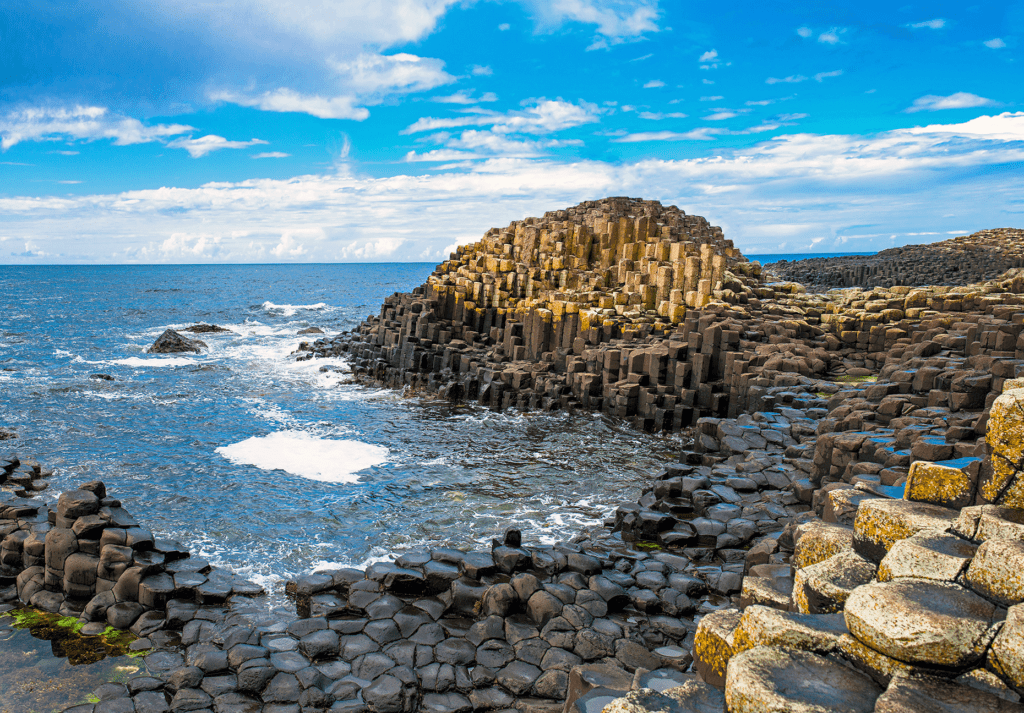
From the mysteries of Brú na Bóinne to the wild cliffs of Skellig Michael, from the hidden blooms of the Burren to the cultural buzz of Dublin—Ireland’s UNESCO treasures offer a deeper kind of travel experience. They remind us how ancient, resilient, and inspired this little island truly is.
